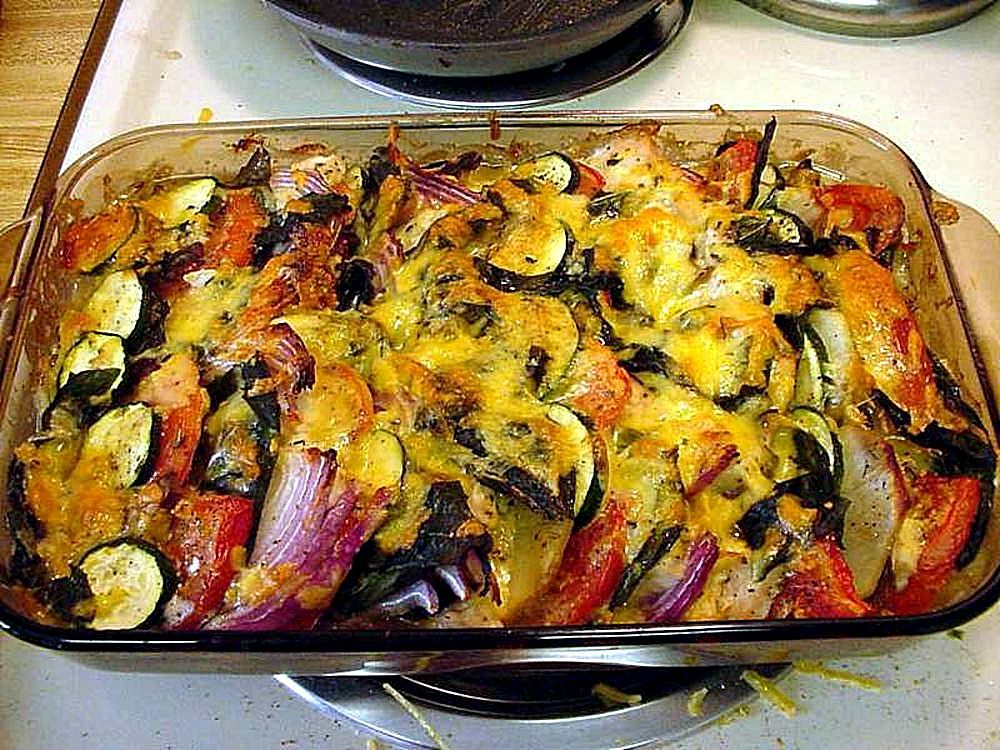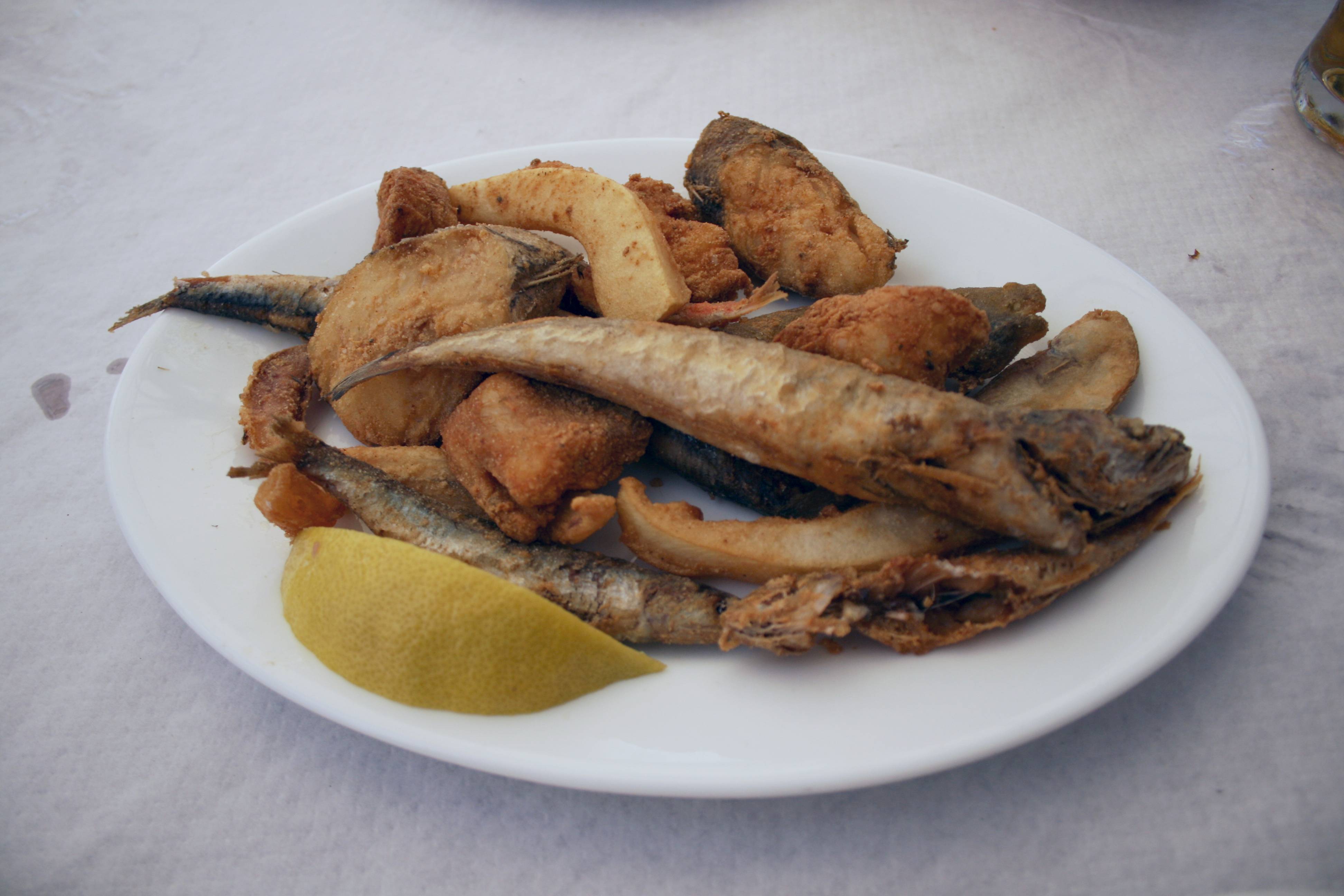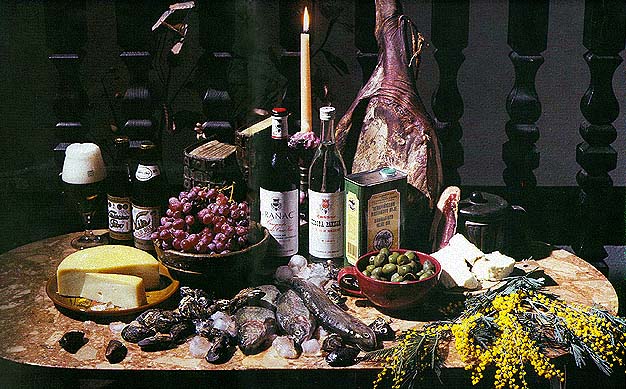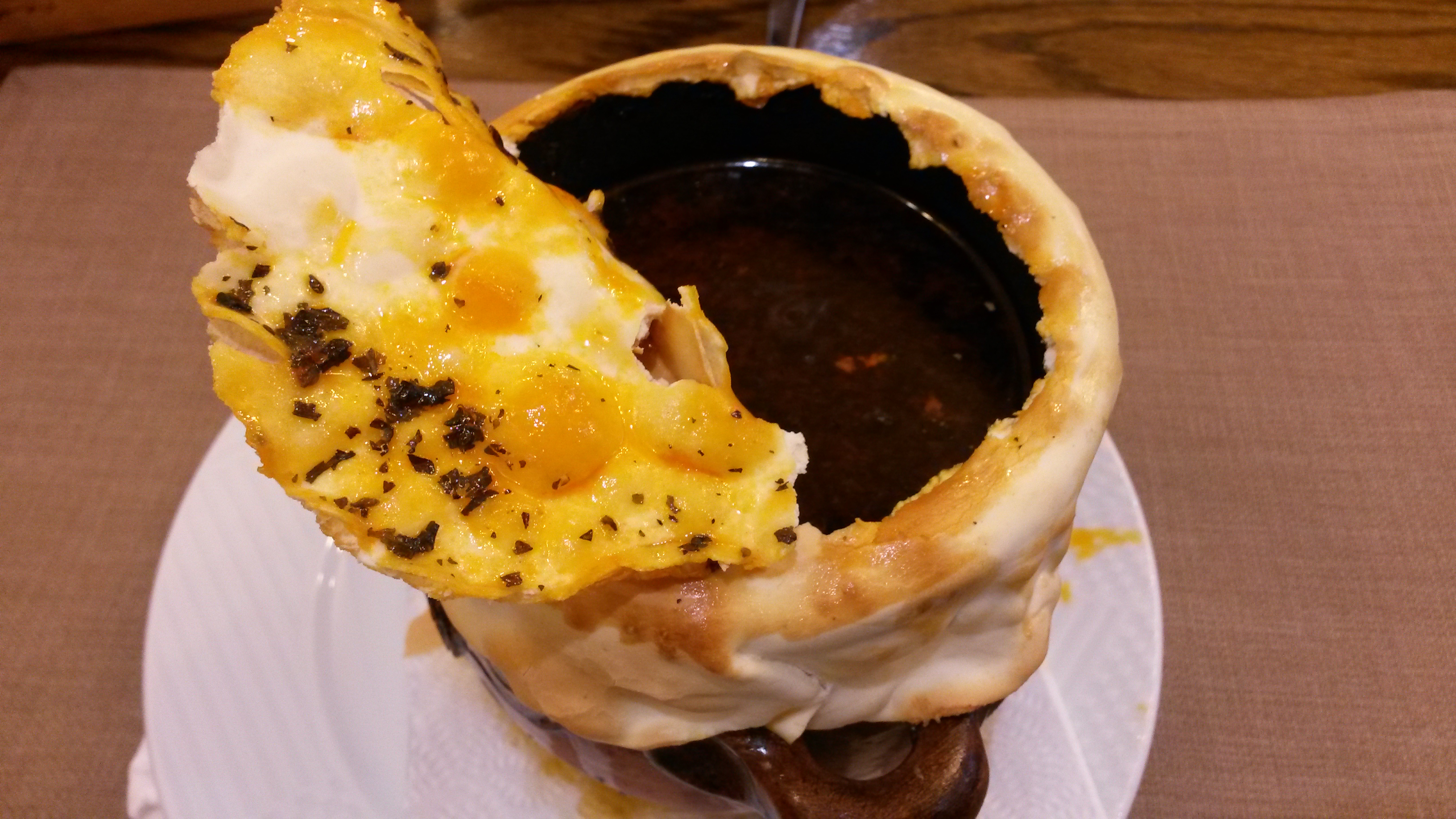|
Güveç
Güveç ( IPA: gy'vetʃ ) is a family of earthenware pots used in Balkan, Persian, Turkish, and Levantine cuisine; various casserole or stew dishes cooked in them are called ghivetch. The pot is wide and medium-tall, can be glazed or unglazed, and the dish in it is cooked with little or no additional liquid. Construction Clay is combined with water and sand and some combination of straw, hay, sawdust or wood ash and kneaded to remove any air bubbles. The pot is thrown or handshaped, allowed to partially dry, and the surfaces smoothed to make them non-porous. After the pot dries completely it is glazed and kiln-fired. The people of Sorkun have "for centuries" specialized in the production of the pot out of locally dug clay. Dishes Dishes traditionally made in such pots are known throughout the Balkans as a traditional autumn vegetable stew, but are most closely associated with Romania and Bulgaria, where it is called ghivetch. The name ''đuveč'', an earthenware casserol ... [...More Info...] [...Related Items...] OR: [Wikipedia] [Google] [Baidu] |
Casserole
A casserole ( French: diminutive of , from Provençal 'pan') is a normally large deep pan or bowl a casserole is anything in a casserole pan. Hot or cold History Baked dishes have existed for thousands of years. Early casserole recipes consisted of rice that was pounded, pressed, and filled with a savoury mixture of meats such as chicken or sweetbread. Some time around the 1870s this sense of casserole seems to have taken its current sense. Cooking in earthenware containers has always been common in most cultures, but the idea of casserole cooking as a one-dish meal became popular in the United States in the twentieth century, especially in the 1950s when new forms of lightweight metal and glass cookware appeared on the market. By the 1970s casseroles took on a less-than-sophisticated image. American-style casserole In the United States, a casserole or hot dish is typically a baked food with three main components: pieces of meat (such as chicken or ground meat) or fish ... [...More Info...] [...Related Items...] OR: [Wikipedia] [Google] [Baidu] |
Earthenware
Earthenware is glazed or unglazed nonvitreous pottery that has normally been fired below . Basic earthenware, often called terracotta, absorbs liquids such as water. However, earthenware can be made impervious to liquids by coating it with a ceramic glaze, which the great majority of modern domestic earthenware has. The main other important types of pottery are porcelain, bone china, and stoneware, all fired at high enough temperatures to vitrify. Earthenware comprises "most building bricks, nearly all European pottery up to the seventeenth century, most of the wares of Egypt, Persia and the near East; Greek, Roman and Mediterranean, and some of the Chinese; and the fine earthenware which forms the greater part of our tableware today" ("today" being 1962).Dora Billington, ''The Technique of Pottery'', London: B.T.Batsford, 1962 Pit fired earthenware dates back to as early as 29,000–25,000 BC, and for millennia, only earthenware pottery was made, with stoneware graduall ... [...More Info...] [...Related Items...] OR: [Wikipedia] [Google] [Baidu] |
Wall Street Journal
''The Wall Street Journal'' is an American business-focused, international daily newspaper based in New York City, with international editions also available in Chinese and Japanese. The ''Journal'', along with its Asian editions, is published six days a week by Dow Jones & Company, a division of News Corp. The newspaper is published in the broadsheet format and online. The ''Journal'' has been printed continuously since its inception on July 8, 1889, by Charles Dow, Edward Jones, and Charles Bergstresser. The ''Journal'' is regarded as a newspaper of record, particularly in terms of business and financial news. The newspaper has won 38 Pulitzer Prizes, the most recent in 2019. ''The Wall Street Journal'' is one of the largest newspapers in the United States by circulation, with a circulation of about 2.834million copies (including nearly 1,829,000 digital sales) compared with ''USA Today''s 1.7million. The ''Journal'' publishes the luxury news and lifestyle magazine ' ... [...More Info...] [...Related Items...] OR: [Wikipedia] [Google] [Baidu] |
Sephardi Jewish Cuisine
Sephardic Jewish cuisine is an assortment of cooking traditions that developed among the Sephardi Jews. Those of this Iberian origin who were dispersed in the Sephardic Diaspora ultimately became the Eastern Sephardim and North African Sephardim as they settled throughout the Mediterranean in Turkey, Greece, the Balkans, and the Arab countries of West Asia and North Africa. Cuisine of the Sephardi Jews also includes the cuisine of those who became the Western Sephardim who settled in Holland, England, and from these places elsewhere. Mizrahi Jews, being the pre-existing Jews of the Greater Middle East (of non-Spanish and non-Portuguese origin), are sometimes called Sephardim in a broader sense due to their style of liturgy. Although there is some overlap in populations due to the Sephardic Diaspora, Sephardic Jews also settled in many other countries outside the Greater Middle East as well. As such, this article deals only with the cuisine of the Jewish populations with an ... [...More Info...] [...Related Items...] OR: [Wikipedia] [Google] [Baidu] |
Pottery Shapes
Pottery is the process and the products of forming vessels and other objects with clay and other ceramic materials, which are fired at high temperatures to give them a hard and durable form. Major types include earthenware, stoneware and porcelain. The place where such wares are made by a ''potter'' is also called a ''pottery'' (plural "potteries"). The definition of ''pottery'', used by the ASTM International, is "all fired ceramic wares that contain clay when formed, except technical, structural, and refractory products". In art history and archaeology, especially of ancient and prehistoric periods, "pottery" often means vessels only, and sculpted figurines of the same material are called "terracottas". Pottery is one of the oldest human inventions, originating before the Neolithic period, with ceramic objects like the Gravettian culture Venus of Dolní Věstonice figurine discovered in the Czech Republic dating back to 29,000–25,000 BC, and pottery vessels that were ... [...More Info...] [...Related Items...] OR: [Wikipedia] [Google] [Baidu] |
Montenegrin Cuisine
Montenegrin cuisine is a result of Montenegro's geographic position and its long history and tradition. Review The first major influences to Montenegrin cuisine came from the Levant and Turkey, largely via Serbia: sarma, musaka, pilav, pita, gibanica, burek, ćevapi, kebab, đuveč, and Turkish sweets such as baklava and tulumba. Hungarian cuisine influences stews and sataraš. Central European cuisine is evident in the prevalence of crêpes, doughnuts, jams, many types of biscuits and cakes, and various kinds of breads. Montenegrin cuisine also varies geographically; the cuisine in the coastal area differs from that of the northern highland region. The coastal area is traditionally a representative of Mediterranean cuisine, with seafood being a common dish. The traditional dishes of Montenegro's Adriatic coast, unlike its heartland, have a distinctively Italian influence as well. [...More Info...] [...Related Items...] OR: [Wikipedia] [Google] [Baidu] |
Piti (food)
Piti is a national dish of Azerbaijan from the Shaki region, its bordering nations, and Central Asia, and is prepared in the oven in clay pots (called ''piti'' in Turkic languages). It is made with mutton, onions, potatoes and chickpeas and infused with saffron water to add flavour and colour, all covered by a lump of fat (Goyruk), and cooked in a sealed claypot. Piti is served in the pot, usually accompanied by an additional plate for "disassembling" the meat and the liquid part with vegetables, which may be eaten separately as the first (soup with vegs) and second (meat) courses of a meal. Tasty, flavourful and nourishing piti is traditionally cooked in earthenware pots called chanag, kyupe or dopu. There are so many variations from the Balkans, Moldova, Georgia and Mediterranean countries that the name is more an idea of a recipe, rather than a named stew or soup. The etymology of the name is derived from the Turkic word bitdi, meaning the end of need to eat any more food. The s ... [...More Info...] [...Related Items...] OR: [Wikipedia] [Google] [Baidu] |
Khoresht
Khoresh ( fa, خورش) or Khoresht ( fa, خورشت, ckb, خۆرشت) is a generic Iranian term for stew dishes in the Iranian cuisine, Afghan cuisine, Tajik cuisine and also Kurdish cuisine. The word is a substantive of the verb ''khordan'' ( fa, خوردن, ckb, خواردن) "to eat" and literally means "meal". It generally refers to different stews in the Iranian, Afghan and Kurdish cuisine, and is typically served beside polo (rice). In Iranian cuisines there are many different khoresh with many unique ingredients. Vegetarian khoreshes are common. Iranian stews use desired amounts of saffron to give a distinctive and fragrant taste. The most popular khoreshes in Iranian cuisine are gheimeh, ghormeh sabzi and fesenjan. Varieties *'' Khoresh bademjan'' (eggplant stew): including eggplants, optional boned leg of lamb or stewed beef, onions, turmeric, tomato paste and medium tomatoes * ''Khoresh bādemjān lapeh'' (aubergine and yellow split pea stew): same as previous ... [...More Info...] [...Related Items...] OR: [Wikipedia] [Google] [Baidu] |
Chanakhi
Chanakhi ( ka, ჩანახი) is a traditional GeorgianDarra Goldstein, ''The Georgian Feast: The Vibrant Culture and Savory Food of Georgia,'' p. 86V.V. Pokhlebkin, ''National Cuisines of the Peoples of the Soviet Union''Chanakhi, Tsentrpoligraf Publ. House, 1978 ; English edition: V.V. Pokhlebkin, ''Russian Delight: A Cookbook of the Soviet People'', London: Pan Books, 1978 dish of lamb stew with tomatoes, aubergines, potatoes, greens and garlic. Preparation Chanakhi is preferably prepared in individual clay pots and served with bread and cheese. Lamb is placed in the pot with already melted butter. Onions, eggplants, potatoes, chopped greens and tomatoes are added in separate layers. After pouring the water, the dish is cooked slowly in the oven for 4.5-5 hours. See also * Chakapuli * Piti * Ghivetch * Türlü * List of lamb dishes This is a list of lamb and mutton dishes and foods. Lamb and mutton are terms for the meat of domestic sheep (species ''Ovis aries'') a ... [...More Info...] [...Related Items...] OR: [Wikipedia] [Google] [Baidu] |
Paula Wolfert
Paula Wolfert (b. 1938) is an American author of nine books on cooking and the winner of numerous cookbook awards including what is arguably the top honor given in the food world: The James Beard Foundation Medal For Lifetime Achievement. A specialist in Mediterranean food, she has written extensively on Moroccan cuisine including two books, one of them (''The Food of Morocco'') a 2012 James Beard Award winner. She also wrote ''The Cooking of South-West France'', and books about the cuisine of the Eastern Mediterranean, slow Mediterranean cooking and Mediterranean clay pot cooking. Background Paula was born April 7, 1938, in Brooklyn, New York, daughter of Sam and Frieda Harris. She attended Columbia University in New York between 1956 and 1959, earning a degree in English. During that time, she received as a gift from her mother a series of six lessons with Dione Lucas, a renowned English chef who ran a cooking school in New York. "I loved it," Paula later reported. "I loved it ... [...More Info...] [...Related Items...] OR: [Wikipedia] [Google] [Baidu] |
Karides Güveç
''Karides güveç'' is a shrimp dish in Turkish cuisine. It also contains tomato, tomato paste, garlic, onion, chili pepper and optionally mushroom. It is usually cooked and served in croks or relatively smaller sized ''güveç''s, by adding melted kaşar on top of the dish. It is consumed more commonly in ''meyhane''s and (pubs) as well as houses and restaurants. It is considered an ''entrée''. See also * Midye dolma * List of shrimp dishes This is a list of notable shrimp dishes. It includes dishes that use shrimp as a primary ingredient. Many various dishes are prepared using shrimp. Shrimp dishes Unsorted * Drunken shrimp * Karides güveç * Prawn Rougaille * Prawn soup * ... References {{Italic title Turkish cuisine Shrimp dishes ... [...More Info...] [...Related Items...] OR: [Wikipedia] [Google] [Baidu] |
Türlü
Türlü is a casserole of Turkish cuisine. It is made of stewed vegetables and may also include stewed meat. Varieties of this dish are also found in Balkan cuisines. In particular, it is known as turli perimesh in Albania, tourlou or tourlou tourlou in Greece, and as turli tava in North Macedonia. The name derives from Old Turkic word ''türlüg'' meaning "variety". Türlü may be cooked in a clay cooking pot called güveç. This type is called ''türlü güveç'' in Turkey and in Bulgaria. The Macedonian version, ''turli tava'', is traditionally made in a similar earthenware cooking pot, called ''tava''. The basic ingredients of türlü vary greatly. The dish usually includes potatoes, eggplants and okra. Green beans, bell peppers, carrots, courgette, tomatoes, onions and garlic can also be added. Meat versions are made with beef or lamb, in the Balkans also with pork. Other usual ingredients are cooking oil, water, salt, black pepper or crushed red pepper, tomato paste or pep ... [...More Info...] [...Related Items...] OR: [Wikipedia] [Google] [Baidu] |








